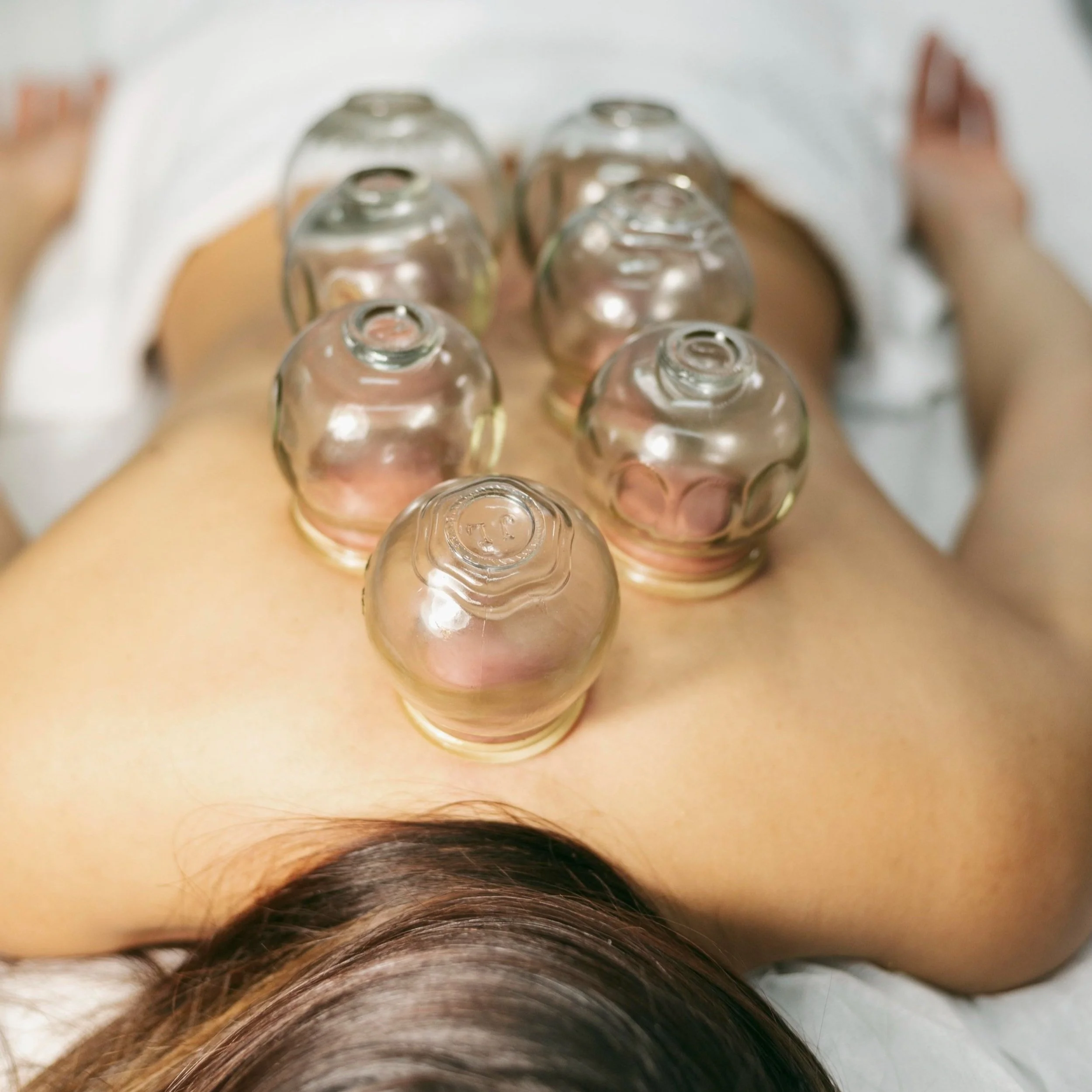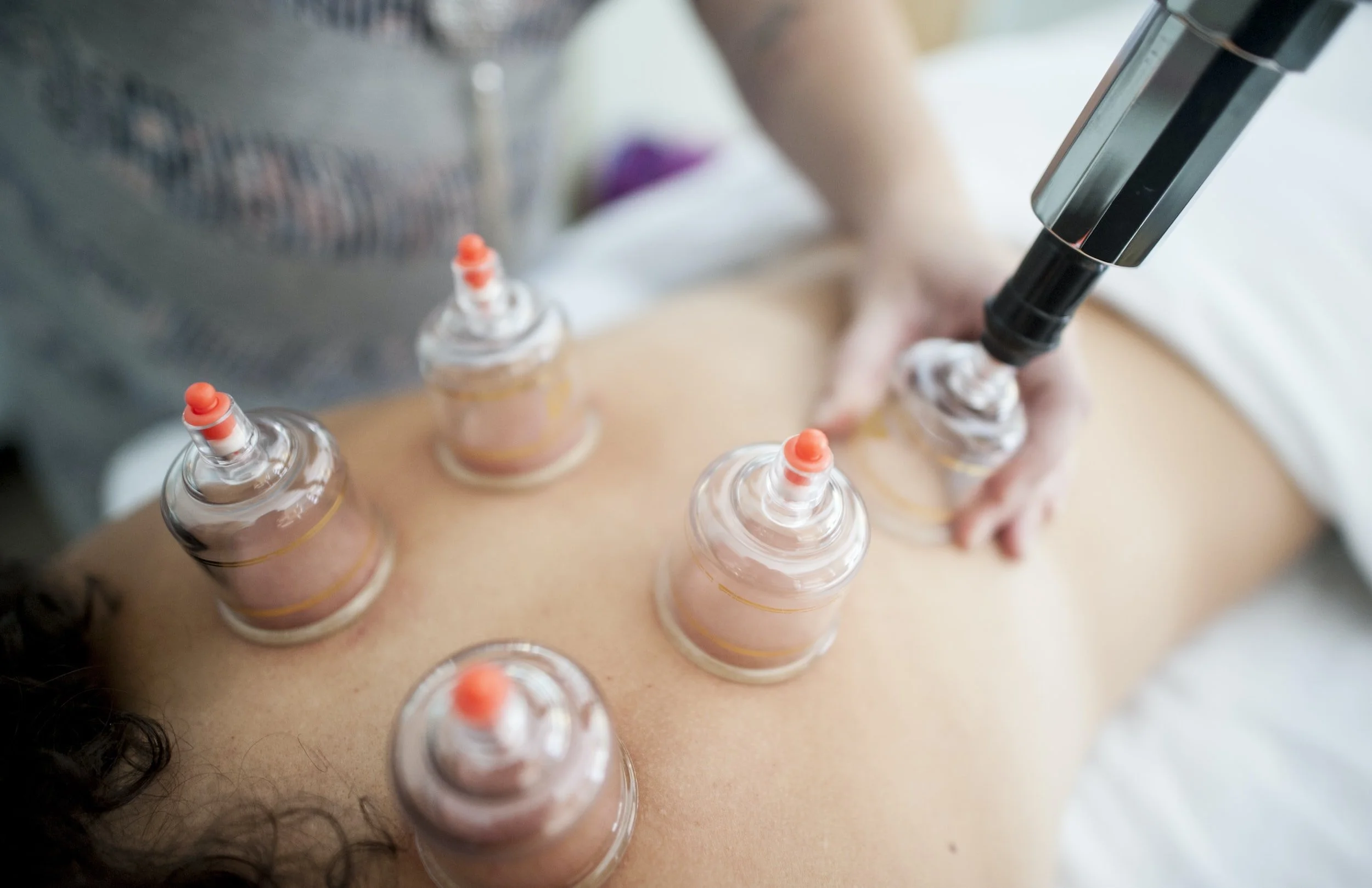What is Cupping?
Cupping therapy, with its distinctive circular marks, has been gaining popularity in recent years, popping up in social media feeds and wellness circles. But what exactly is cupping, and what's behind those intriguing bruises? Let's dive into the world of this ancient practice.
What is Cupping?
Cupping is a traditional therapy, used in various cultures for thousands of years, that involves placing cups on the skin to create suction. This suction pulls the skin and superficial muscle layer into the cup, creating a localized area of low pressure.
The Mechanics: Vacuum vs. Glass
There are a couple of primary methods for creating this suction:
Traditional Glass Cups:
These involve heating the air inside the cup with a flame, which then creates a vacuum as it cools. The cup is quickly applied to the skin. This method can be a little more dramatic, but when practiced by a trained professional, it is very safe.
Image by: Freepik
Modern Vacuum Cups:
These use a handheld pump to create the suction, offering more precise control over the pressure. This method is often considered more convenient and less intimidating for first-timers.
Image by: Unsplash
Both methods aim to achieve the same result: localized suction and increased blood flow. The choice between the two often comes down to practitioner preference and individual client needs.
What Does Cupping Do?
Proponents of cupping believe it offers a range of benefits, including:
Pain Relief: Cupping is often used to alleviate muscle tension, pain, and stiffness. The suction is thought to help release tight muscles and improve blood circulation.
Improved Circulation: By drawing blood to the surface, cupping may promote better circulation, which can aid in tissue healing and reduce inflammation.
Relaxation: Many people find cupping to be a relaxing experience, as it can help release tension and promote a sense of well-being.
Respiratory Support: In traditional medicine, cupping has been used to address respiratory issues like coughs and colds.
Skin Health: Some practitioners believe it can help with skin conditions.
The Marks: More Than Just Bruises
The distinctive circular marks left behind by cupping are often mistaken for bruises. However, they are not caused by impact trauma. Instead, they are a result of the suction drawing blood to the surface of the skin.
The color and intensity of the marks can vary depending on the degree of stagnation or tension in the area. Darker marks may indicate areas of greater stagnation or deeper tension.
The marks typically fade within a few days to a week.
It is not bruising in the medical sense, it is more like a localized increase in blood flow to the surface of the skin.
Important Considerations:
Cupping should be performed by a trained and licensed practitioner.
It's essential to disclose any medical conditions or medications to your practitioner before undergoing cupping.
Cupping is not suitable for everyone, and certain conditions may be contraindications.
While cupping has been used for a very long time, scientific research on it's effectiveness is still ongoing.
What does the science say:
When examining cupping therapy through a scientific lens, it's crucial to acknowledge that the evidence is mixed, and more high-quality research is needed. Here's a breakdown of what the science currently indicates:
Key Scientific Considerations:
Limited High-Quality Research:
Many studies on cupping have limitations, such as small sample sizes, lack of control groups, or methodological flaws. This makes it challenging to draw definitive conclusions.
Therefore, while some studies show positive results, they are often considered preliminary.
Proposed Mechanisms of Action:
Researchers are exploring several potential mechanisms through which cupping might exert its effects:
Pain Modulation:
The "pain gate" theory suggests that cupping may stimulate sensory nerve fibres, which can inhibit the transmission of pain signals to the brain.
It may also influence the release of endogenous opioids, the body's natural pain relievers.
Increased Blood Flow:
The suction created by cupping can increase local blood flow, potentially promoting tissue healing and reducing inflammation.
Immune System Effects:
Some studies suggest that cupping may influence the immune system by modulating inflammatory responses.
In conclusion:
While the marks may look intense, cupping is generally considered a safe and effective therapy when performed correctly. If you're curious about cupping, it's always best to consult with a qualified healthcare professional to determine if it's right for you.


